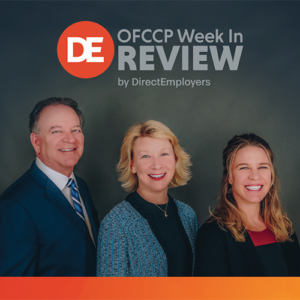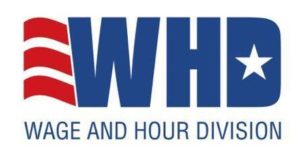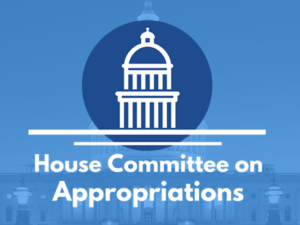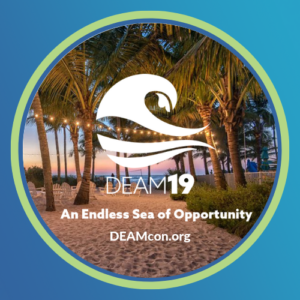
- OFCCP Action Plan Update
- Opinion Letter: Gig Worker an Independent Contractor?
- More Dollars for the OFCCP?
- Decided: 2017 Pay Data Required
- Lowest Unemployment Rate (3.6%) Since December 1969!
- Appeal Filed on Component 2
- EEOC’s First Progress Report
- Reminder: Countdown to DEAM19! It’s Next Week! Still time to Register!
Monday, April 29, 2019: OFCCP Action Plan Update

- Roadmap to a Compliance Evaluation for Contractors
- Standardized and Written Training Protocols
- Improved Contractor and Compliance Officer Training
- OFCCP At A Glance Brochure
- Internet Applicant Definition Infographic
- Recordkeeping Infographic
- Postings and Notices Requirements Guide
View the progress of the OFCCP’s action plan, the 2017 Town Hall Executive Summary, Town Hall Action Plan, and status of all 2017 deliverables, and discover additional dates and locations for future Town Halls.
Monday, April 29, 2019: Opinion Letter: Gig Worker an Independent Contractor?

- The nature and degree of the potential employer’s control;
- The permanency of the worker’s relationship with the potential employer;
- The amount of the worker’s investment in facilities, equipment, or helpers;
- The amount of skill, initiative, judgment, or foresight required for the worker’s services;
- The worker’s opportunities for profit or loss; and
- The extent of integration of the worker’s services into the potential employer’s business.
Fun Facts
Why is it called the “gig” economy? People who work in the gig economy have small jobs instead of, or as well as, full-time jobs. Instead of a salary, workers get paid for the “gigs” they do, like a food delivery or a taxi journey. The gig economy is a term now used to describe the growing phenomenon of task-based employment.
Monday, April 29, 2019: More Dollars for OFCCP?

A summary of the Bill highlights the Office of Federal Contract Compliance Programs (OFCCP):
$120 million for OFCCP, an increase of $17 million above the 2019 enacted level and $16 million above the President’s FY 2020 budget request we had earlier reported here.
OFCCP previously received $103.5 million for FY 2019; see the justification here. This was $12.5 million more than the administration had initially requested for the Fiscal Year currently in progress.
Up Next
The Bill heads to the full House Appropriations Committee for markup. The full text of the Subcommittee’s Bill is here. The Senate Appropriations Committee will also publish a proposed budget in coming months. As a practical matter, too, the Senate will drive the final budget number for OFCCP, as it has done for the past five years. Ultimately, when both Houses have published their budgets, and assuming the Senate does NOT propose the same budget for OFCCP as the House, the two Houses will meet “in conference” to arm-wrestle the final numbers in a compromise between the two Houses. Always a fun time when Republicans and Democrats sit across the table glowering at each other the whole time and posturing for the media.
Fun Facts
FY = Fiscal Year. It defines the U.S. government’s budget. FY 2020 is October 1, 2019 – September 30, 2020. Why does the Federal fiscal year begin on October 1? It allows newly-elected officials to participate in the budget process for their first year in office. For example, President Trump and the Congressional members elected in November 2016 took office in January 2017. The Trump administration proposed its first budget (the FY 2018 budget: October 1, 2017 – September 30, 2018) on February 27, 2017, just five weeks after taking office.
Friday, May 3, 2019: Decided: 2017 Pay Data Required

Notice of Immediate Reinstatement of Revised EEO-1: Pay Data Collection for Calendar Years 2017 and 2018:
“EEO-1 filers should begin preparing to submit Component 2 data for the calendar year 2017, in addition to data for the calendar year 2018, by September 30, 2019, in light of the Court’s recent decision in National Women’s Law Center, et al., v. Office of Management and Budget, et al., Civil Action No. 17-cv-2458 (D.D.C.). The EEOC expects to begin collecting EEO-1 Component 2 data for calendar years 2017, and 2018 in mid-July, 2019, and will notify filers of the precise date the survey will open as soon as it is available.”
Important Dates
Filers should continue to use the currently open EEO-1 portal to submit Component 1 data from 2018 by May 31, 2019, if they have not already filed.
The EEOC Notice is now slipping (just a wee bit) the date of the opening of the Component 2 reporting portal from Dr. Haffer’s oral testimony to the Court from a hard-estimate of Monday, July 15, 2019 to “mid-July,” while the EEOC now promises to publish a more firm portal opening date in the future but at an as of yet unknown date/time.
Fun Facts
Those of you who attended John Fox’s webinar on behalf of the National Employment Law Institute (“NELI”) on Thursday were privy to all the inside baseball, including this fun fact:
Covered Government contractors subject to OFCCP’s Executive Order 11246 jurisdiction are NOT obligated to file Component 2 hours worked and pay data. OFCCP and the EEOC agree. No controversy here. OFCCP did not publish a Rule so requiring; only the EEOC. WAIT, WHAT??? Don’t get too excited; while an employer may not have to file Component 2 hours worked and pay data as a “Government Contractor,” it would nonetheless have to file Component 2 data if it’s a “covered employer” which (a) employs 100 or more employees AND (b) is subject to Title VII (i.e., its business affects Interstate Commerce sufficiently to allow federal law to attach to the company’s business). So what, you ask? NO DEBARMENT for failure to report Component 2 data since the OFCCP’s Executive Order 11246 Rules do not require Component 2 hours worked and pay data reporting. However, an EEOC regulation specifies a consequence for a “covered employer” with 100 or more employees and covered by Title VII which fails to file an EEO-1 Survey report:
“Any employer failing or refusing to file Report EEO-1 when required to do so may be compelled to file by order of a U.S. District Court, upon application of the Commission.” 29 C.F.R. §1602.9.”
Friday, May 3, 2019: Lowest Unemployment Rate (3.6%) Since December 1969!
The release of April’s Employment Situation shows unemployment numbers fall across the board! U.S. Secretary of Labor Alexander Acosta spotlighted that:
“For 14 consecutive months, the unemployment rate has remained at or below 4.0% and this month included widespread good news: the unemployment rate reached record lows for Hispanic-Americans, Americans with disabilities, and Gulf War II veterans, and matched record lows for Asian Americans and all veterans.”
| Unemployment Rate | April 2019 | April 2018 |
| National (Seasonally adjusted) | 3.6% (down from 3.8% in March) | 3.9% |
| Veterans (Not seasonally adjusted) | 2.3% (down from 2.9% in March) | 3.7% |
| Individuals with Disabilities (Not seasonally adjusted) | 6.3% (down from 7.9% in March) |
8.0% |
Friday, May 3, 2019: Appeal Filed on Component 2

In the meantime, Judge Chutkan’s decision stands and is operative, as a result, absent a Stay freezing its operation pending appeal. Employers must be prepared to report Component 2 data, or choose (or be forced) to file late (because unable to meet the September 30, 2019 filing deadline, many will fall into this group), or choose to not file at all with whatever consequences may or may not befall those which choose not to file.
Friday, May 3, 2019: EEOC’s First Progress Report

Report Highlights
- The EEOC will post a statement that the notice of appeal filed does not affect the requirement to submit 2017 and 2018 Component 2 date by September 30, 2019 (the notice is not on the EEOC site yet);
- May 1, 2019, the EEOC signed a contract with the National Opinion Research Center (“NORC”) at the University of Chicago to collect Component 2 data;
- *Notification to the Court on the progress of Janet Dhillon’s nomination and vote (Dhillon is awaiting confirmation to a seat on the EEOC and to Chair The Commission).
Summary of Activities Anticipated from 5/4/2019-5/24/2019
- EEOC will work with NORC to draft and modify a contract to collect 2017 Component 2 data (the estimate of $3M by Dr. Samuel C. Haffer, EEOC’s Chief Data Officer, probably did not include two years of data collection at once);
- EEOC and NORC to have a kick-off meeting, then plan to meet bi-weekly;
- NORC will develop a Project Management Plan that will include detailed planning to execute the contract;
- The EEOC will oversee preparation and planning for the launch of the NORC email and phone helpdesk to assist filings;
- The helpdesk will launch.
*Note
We hear the nomination of Janet Dhillon to be a Commissioner of the EEOC and to Chair the Commission will be moving in the Senate this week, after over a year’s delay. Business groups have recently been pushing for her nomination to give the EEOC a quorum and the ability to pull back the Component 2 hours worked and pay data reporting, among other things.
Anthony Kaylin of American Society of Employers (“ASE”) provided this update. The American Society of Employers and DirectEmployers together filed a Motion to make an appearance as “Amicus Curiae” (a friend of the court) in the federal District Court for the District of Columbia in the lawsuit the National Women’s Law Center (“NWLC”) and other plaintiffs have brought against the EEOC and the Office of Management and Budget (“OMB”).
Reminder: Countdown to DEAM19! (It’s Next Week! Still Time to Register!)

Compliance Spotlight: Artificial Intelligence & The Law Part Ways at Times
Artificial intelligence (AI) is a trending topic in the HR community, and while HR leaders and many in the organizational process would believe that new AI will revolutionize how HR departments function in the near future, they are only partly correct. The
current belief in the HR world is that cognitive computing will transform decision-making processes. While processes will transform, the individuals interacting with this technology also need to understand how the law will control and counter the
use of AI. Join Former OFCCP Director Ondray T. Harris as he provides legal expertise regarding the use of AI in HR.
Reminder
Ask your compliance questions (on any OFCCP/EEOC or discrimination law/Affirmative Action issue) for John Fox & Candee Chambers in advance here!
THIS COLUMN IS MEANT TO ASSIST IN A GENERAL UNDERSTANDING OF THE CURRENT LAW AND PRACTICE RELATING TO OFCCP. IT IS NOT TO BE REGARDED AS LEGAL ADVICE. COMPANIES OR INDIVIDUALS WITH PARTICULAR QUESTIONS SHOULD SEEK ADVICE OF COUNSEL.
SUBSCRIBE.
Compliance Alerts
Compliance Tips
Week In Review (WIR)
Subscribe to receive alerts, news and updates on all things related to OFCCP compliance as it applies to federal contractors.
OFCCP Compliance Text Alerts
Get OFCCP compliance alerts on your cell phone. Text the word compliance to 55678 and confirm your subscription. Provider message and data rates may apply.

